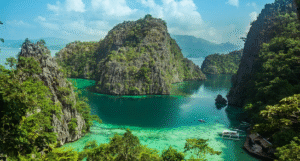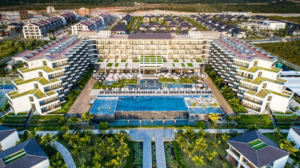Sea Nomads of Southeast Asia. Losing a Living Culture Beneath the Waves. Across the shallow coral-rich waters of Southeast Asia. A unique group of people has lived for centuries in ways most of us can barely imagine. They are the Sea Nomads communities like the Bajau Laut Moken and Ursang. Laut tribes that traditionally spent most of their lives on boats or stilt houses floating in lagoons and bays.
But in today’s world, this way of life is under serious threat.

- Climate change is drowning their habitats.
- Overfishing is draining their ancestral waters.
- Government policies often force relocation to land.
- Modernisation is eroding traditional knowledge passed through generations.
These changes are not just destroying their lifestyle. They are erasing an entire worldview built on harmony with the sea.
Sea Nomads of Southeast Asia: Agitate What’s at Stake Isn’t Just Their Survival. It’s Ours Too.
Let’s dig deeper. The Sea Nomads don’t just represent a unique culture. They are living case studies in adaptation, sustainability and survival.

Their traditions offer vital insights into:
- Low-impact living in marine environments.
- Oral navigational knowledge that predates GPS by centuries.
- Freediving ability that challenges our understanding of human biology.
- Marine conservation practices are rooted in lived experience, not science labs.
For instance, the Bajau Laut of the Philippines, Malaysia and Indonesia can hold their breath for over five minutes and dive to depths of 60–70 meters without oxygen tanks. A study published in Cell (2018) revealed they have larger spleens a genetic adaptation for diving, developed through generations.
Yet, many Bajau are now land dwelling due to eviction from marine parks. Some are stateless, with no legal identity in countries they’ve lived in for centuries. Their boats rot their children are lured into coastal slums. And their ancient knowledge of the sea disappears, wave by wave.

Sea Nomads of Southeast Asia: Quick Snapshot: Key Sea Nomad Groups
Group Location Key Traits
Bajau Lau Philippines, Malaysia, Indonesia, Boat dwellers, master divers
Moken Thailand, Myanmar Stilt-house settlers, animist beliefs
Ursang Laut Indonesia, Malaysia: Boat-based traders, strong clan systemLearn, Preserve and Empower
1. Recognising Their Rights

One of the most powerful steps is granting these communities legal recognition. For example:
In Malaysia, the Bajau Laut are often stateless. Legal ID programs could unlock education, healthcare and fishing permits.
In Thailand, the Moken face restrictions in national parks. Policy reforms could protect their sustainable fishing methods.
Governments must work with not against Sea Nomad communities. International human rights bodies can play a role here by pushing for cultural and legal protection.

2. Supporting Education That Doesn’t Erase Identity
Modern schooling often pulls children away from traditional lifestyles. But what if the curriculum included local maritime knowledge?
In Myanmar, some NGOS are piloting bilingual, bicultural education models. Students learn math and science alongside sailing, diving and fish identification.
The result? Kids stay rooted while becoming empowered.
Short list of educational needs:
- Local language instruction
- Marine ecosystem literacy
- Documentation of oral histories
- Training in sustainable tourism
3. Sustainable Livelihoods That Align with Tradition
Instead of forcing Sea Nomads into land jobs, why not create sea-based livelihoods?

Examples already working:
- Eco-tourism: Bajau-led diving tours in Sabah, Malaysia
- Handicrafts: Moken wood carving sold to tourists in Thailand
- Some regions of: Indonesia and the Philippines have adopted seaweed farming.
These opportunities allow communities to earn income without abandoning their connection to the sea.
4. Scientific Partnership, Not Exploitation
Biologists, anthropologists and climate researchers can learn enormous amounts from Sea Nomads.
But rather than just studying them, researchers should:

- Co-develop knowledge (e.g., underwater navigation, fish behaviour)
- Offer revenue-sharing from documentaries and studies
- Provide training so Sea Nomads can become co-researchers
Imagine Bajau teens filming marine biodiversity for YouTube documentaries—or guiding marine scientists using ancestral maps. It’s possible.
Who Are They, Really? A Closer Look
- Bajau Laut: The Real Sea Gypsies
- Home: Coastal Sabah (Malaysia), Sulu Archipelago (Philippines), eastern Indonesia
- Style: Live mostly on houseboats or stilted homes over reefs
- Food: Spear fish, octopus, sea cucumbers
- Beliefs: Blend of Islam and animism
- Fun Fact: Bajau divers don’t use weights or wetsuits they rely purely on skill
The Bajau are often labeled sea gypsies, but this term is outdated and dismissive. They are maritime experts, not wanderers. Some haven’t set foot on land for months at a time.

- Moken: The Andaman Sea’s People of the Boats
- Home: Thailand (Surin Islands), Myanmar (Mergui Archipelago)
- Style: Migrate seasonally, live in boats or temporary beach shelters
- Language: Austronesian dialects, rich in sea-related vocabulary
- Challenge: Restricted fishing in Thai National Parks
During the 2004 tsunami, most Moken survived by reading natural signs retreating sea levels, bird calls and water colour changes. Their intuition saved lives.
Ursang Laut: Traders and Travelers
- Home: Parts of Borneo, Sumatra, and the Indonesian Riau Islands
- Role: Historically played the middleman in maritime trade networks
- Culture: Clan-based, strong community leadership
- Note: Many have now settled, but still retain oceanic traditions
They have legendary knowledge of maritime routes, tides and currents. They once helped spread spices across the Malay Archipelago.

What Can You Do?
You don’t need to live on a boat to help Sea Nomads survive and thrive.
Here’s how you can get involved:
- Learn by viewing: Documentaries such as Children of the Sea Nomads or The Mirror of the Sea.
- Support NGOS: Groups like Blue Communities, Seaview and The Moken Project actively work with Sea Nomads.
- Travel responsibly: If you visit the Philippines, Thailand or Indonesia, choose tours run by Sea Nomad communities.
- Share their stories: Use blogs, vlogs, or social media to spread awareness.
Simple Actions, Real Impact

- Share a video or article every month
- Support sustainable seafood brands
- Avoid resorts built on traditional nomadic routes
- Recommend books like The Last Sea Nomads by Robert K. Nelson
A Final Word
Southeast Asia’s Sea Nomads are more than just historical artefacts. They are living bridges between humanity and the ocean. Their stories are not only about hardship, they’re about resilience, innovation and a way of being that sees the sea as home, not enemy.
But this ancient relationship is fragile.
The question is not just can they survive modernisation?
It’s also can we survive without learning from them?
By protecting their rights, learning from their knowledge and building sustainable futures with them, not for them. We stand to gain a deeper understanding of both the ocean and ourselves.
If you’d like, I can help you format this post for your blog, optimise it for SEO or even suggest headings, meta descriptions and internal linking strategies.
Would you like help with that next?




